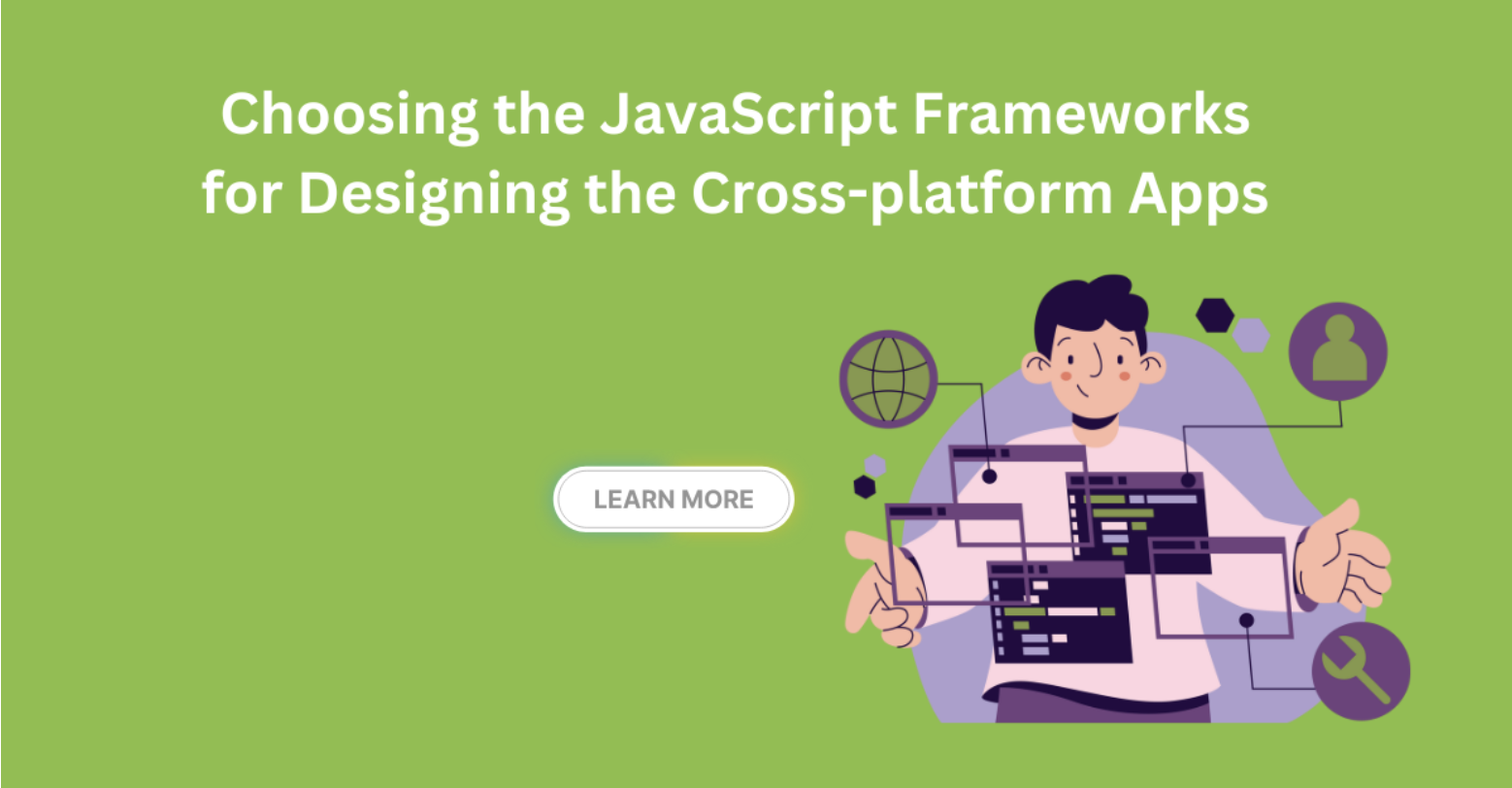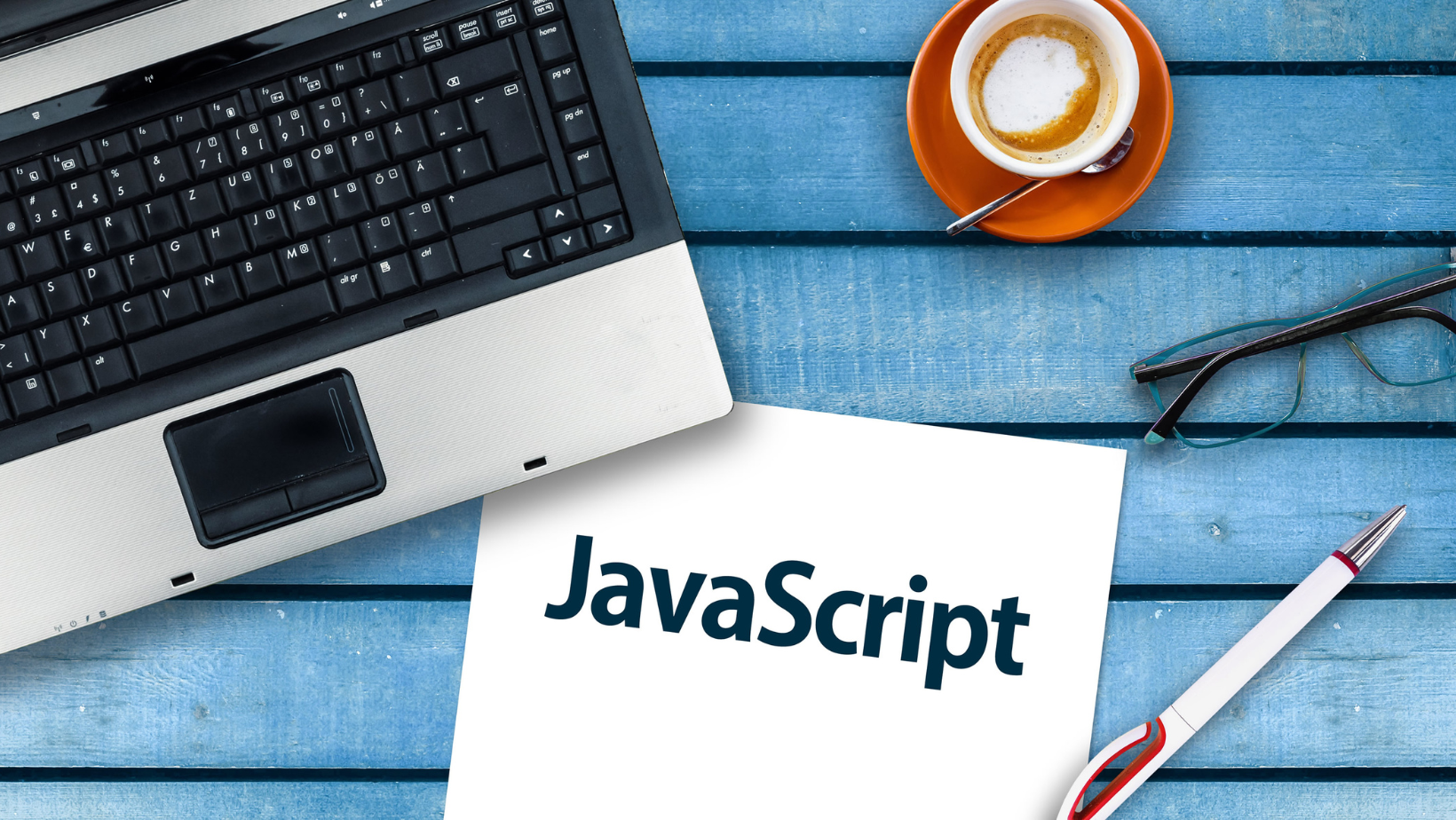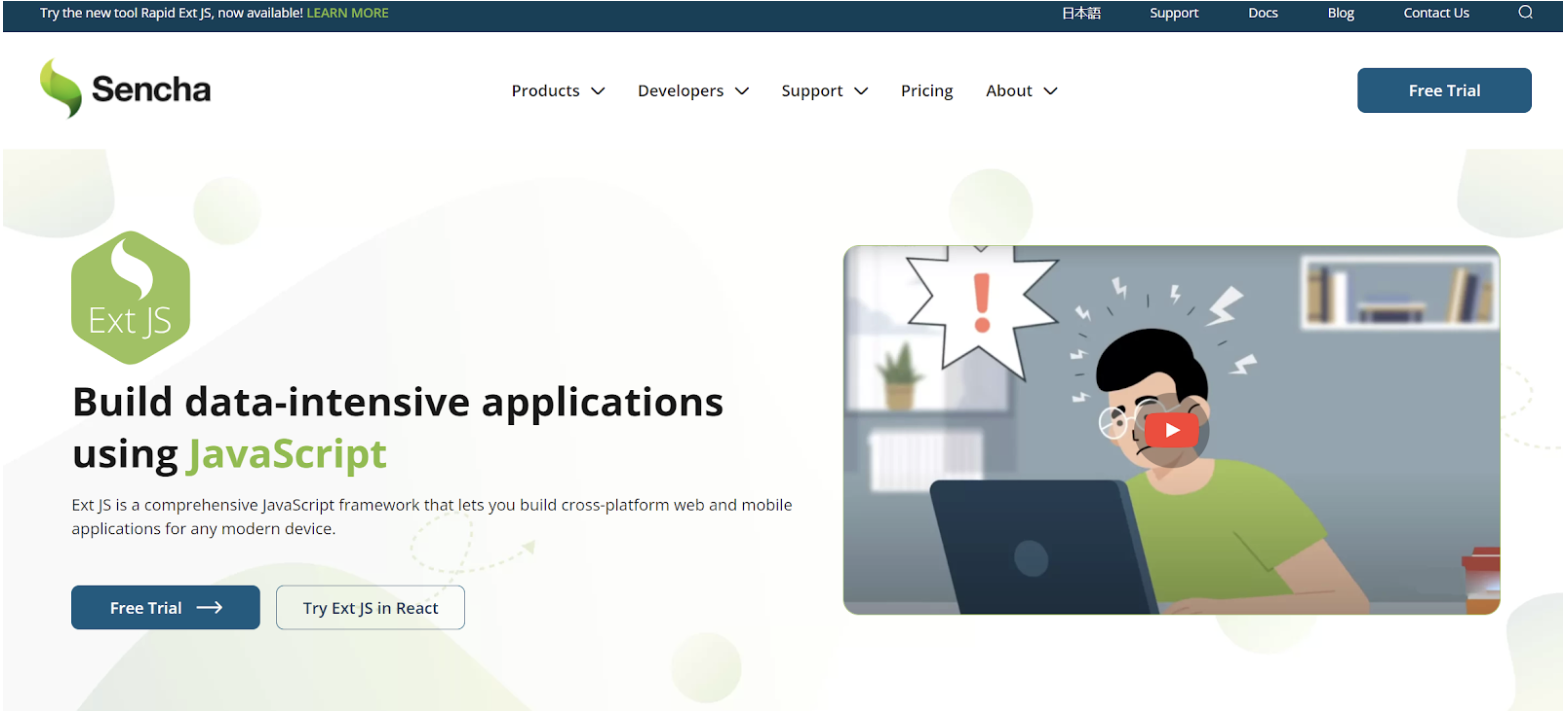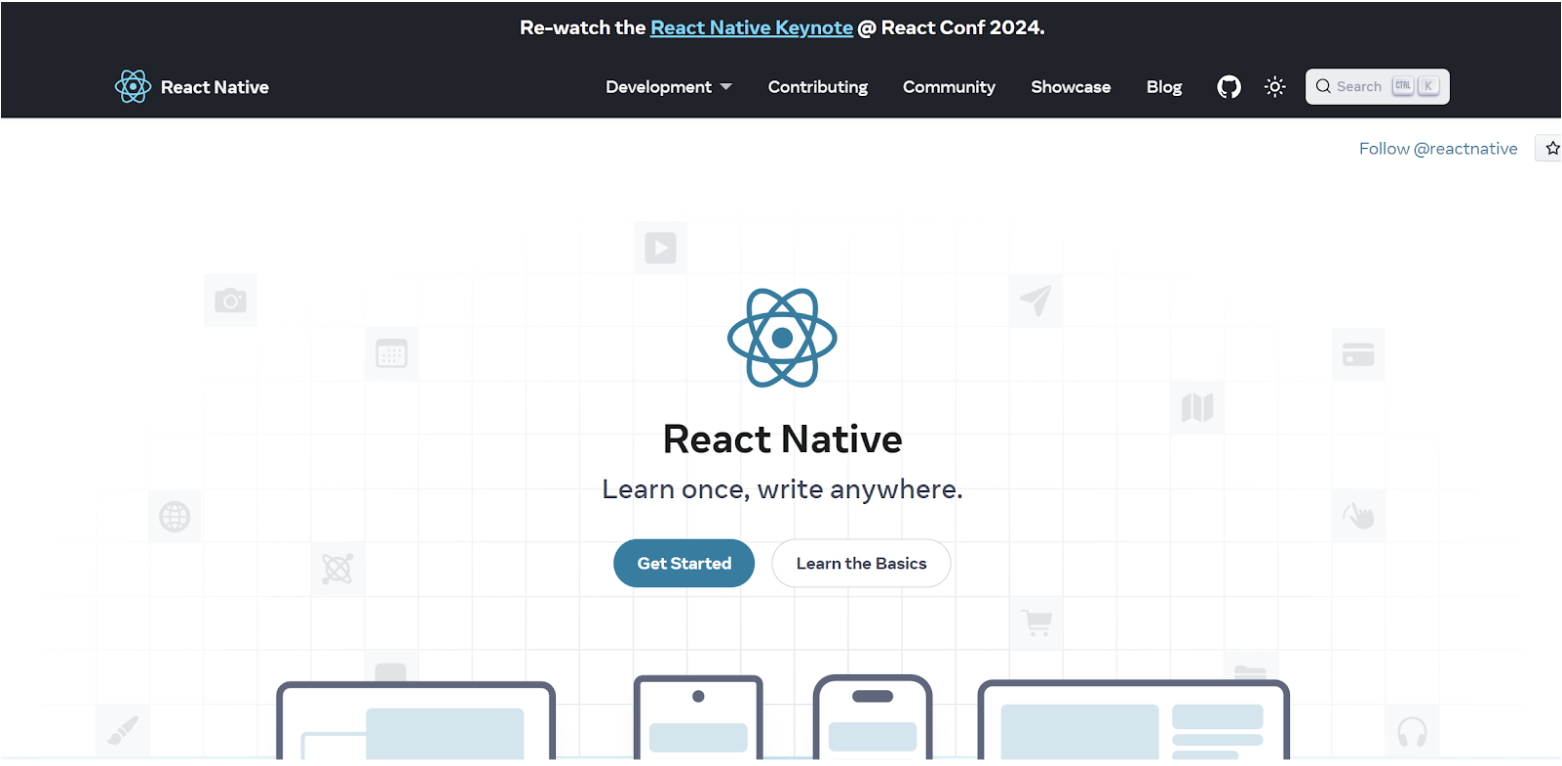Choosing the JavaScript Frameworks for Designing Cross-platform Apps

There seems to be a growing trend among clients serviced by today’s mobile phone users. These changes make it necessary to develop cross-platform applications, mainly when focusing on user interfaces for seamless experiences. In supporting their operations, firms must build applications with broad reach where JavaScript frameworks are helpful. You will explore these frameworks in the coming sections.
Cross-platform applications should work on various devices and OS platforms, and techniques like automatic code splitting can enhance their performance. The practice of managing multiple codebases for a single app across multiple platforms is fading. This is why selecting the appropriate JavaScript frameworks is necessary for efficient static site generation, which is crucial for scalable web development.
This article outlines how to choose the right JavaScript frameworks and addresses the challenges organizations face with cross-platform apps. It also discusses how utilizing 0/1–2 and 0/3–6 design patterns can improve development.
Such apps aid in quicker deployment, cost-effectiveness, and reaching a larger market. You will learn how native apps differ from cross-platform ones. The article will review the top 5 JavaScript frameworks, such as React Native, Flutter, and Sencha Ext JS, highlighting their role in static site generation and user interfaces. Now, let’s get started.

What Is a JavaScript Framework?
A JavaScript framework is a repository complete with pre-written code. It helps in building applications quickly. These frameworks come with components, eliminating the need to develop everything from scratch. They have features or building blocks that simplify the creation of code.
Examples include Angular, Vue.js, and React. Facebook’s React is highly favored for single-page applications. The 2023 Stack Overflow survey shows that React remains the most popular web framework. For enterprise applications, Google’s Angular is a top choice.
A JavaScript framework allows developers to focus on a project’s unique aspects, minimize effort, and help maintain consistency. It facilitates the creation of both web-based and mobile applications.
Why Use a JavaScript Framework?
A JavaScript framework speeds up development. Often, developers need to write code from scratch. Instead, they can implement features that are built into the framework. This reduces mistakes and shortens the time required to complete a project.
For instance, Vue.js is user-friendly and enables better app experiences. Due to its simplicity and robust structure, its adoption rate surged by 40% from 2020 to 2023. Angular is ideal for complex in-built systems, and even larger applications are well-structured.
Cross-platform frameworks like React Native allow one code to cater to mobile and web interfaces. Developers can write one codebase for both iOS and Android. This makes these frameworks attractive for fast multi-platform development.
JavaScript Frameworks: Key Features
Component-Based Architecture
New JavaScript frameworks provide component-based architecture. This divides the graphical interface into smaller, reusable units. Each component has its styling, model, and behavior.
The main benefit of this approach is that changes within one component do not affect others. Components can also be used across different applications, reducing development time and increasing productivity.
Data Binding
A good JavaScript framework allows data binding and synchronizing data across the application. Different frameworks vary in their data-binding capabilities. Some provide one-way data binding, while others support two-way or both.
Two-Way Data Binding
Changes in the model update the UI, and changes in the UI update the model. This is used in Angular and Ext JS frameworks.
One-Way Data Binding
Changes in the model affect the UI, but changes in the UI do not update the model. For example, React.js uses one-way data binding.
Routing
Most frameworks offer routing capabilities, which allow developers to implement the app’s navigational structure. Routing assigns specific URLs to predefined views or components, simplifying the development of single-page applications with multiple views.
State Management
State management refers to processes that record and communicate data between app components. For more extensive applications, controlling the state becomes critical. It ensures consistency and smooth functionality.
JavaScript frameworks offer this service. These tools make complex state logic easier to handle. Centralized stores and state management tools are typical examples.
Difference Between a JavaScript Framework and a JavaScript Library
JavaScript frameworks and libraries are different and not interchangeable. A framework combines several tools to develop applications. It includes all the necessary tools and provides a ready-made architecture for the app. It also includes features like routing and state management.
In contrast, a library is a collection of functions needed by developers. These functions include DOM manipulation and data handling. A library lacks a design that guides the entire development process. Instead, it helps solve specific issues during development.
What Is Cross-Platform App Development?
Cross-platform app development creates apps that support more than one operating system and work on different devices. This is in contrast to native applications. Developers use frameworks such as React Native, Flutter, and Xamarin to create cross-platform applications.
Developers write the same code once but can deploy it on multiple platforms, saving both costs and time. Businesses can expand their app audience and ensure a consistent app experience. Cross-platform apps also make the development process easier.
Businesses need these apps to expand their target audience beyond normal limits. They also aim to get products to market quicker.
Why Cross-Platform App Development Will Be Significant in 2024?
Cross-platform development addresses core issues in the evolving digital age. Businesses and customers seek greater diversity, and this approach saves time and resources.
Recurrent code bases for each platform are unnecessary. This method guarantees broader market coverage, shortens the delivery time to market, and reduces programming efforts.
The need for cross-platform development grows with business agility. Companies can expand their target audience, increase customer interaction, and thrive in the app-first age by developing cross-platform apps.
Differences Between Native and Cross-Platform App Development
There are five main differences between cross-platform and native app development.
Cross-Platform Development:
- It works efficiently for the OS built into smartphones.
- It satisfies individual user interface elements.
- It uses a single code base across multiple platforms.
- Platform SDK may limit access to device API.
- It is more costly than native development.
Native App Development:
- It works efficiently but may experience compatibility issues with hardware.
- It performs poorly on UI elements of the target device.
- Native apps are built for a single platform, requiring different codes for others.
- No standard API is available across devices.
- Native cross-app development may be more economical.
Top 5 Famous Cross-Platform Apps Development JavaScript Frameworks
The following are the best JavaScript frameworks for cross-platform apps:
Sencha Ext JS
A web application framework for building interactive cross-platform web applications. It uses techniques such as Ajax, DHTML, and DOM scripting. It can also add dynamic components like grids to static websites.
Furthermore, it is a guiding principle for developing single-page applications (SPAs). Ext JS is regarded as revolutionary in the use of Javascript technologies. It started in history as a YUI plugin developed by Jack Slocum on 15 April 2007.
Currently, all the Ext JS components are incorporated into one single file. This allows for the script of the single JS file. You can also use the Sencha Cmd tool to build more complex applications.

React Native
React Native is a platform for JS mobile development. It can build software applications for various operating systems. This software framework, widely known as META, is an open-source framework developed by Meta Platforms Company Incorporation.
It is designed to simplify the process of creating applications for multiple environments, including Android, Android TV, iOS, Mac OS, tvOS, Web, Windows, and UWP.
The framework combines the React architecture with the operations of the native platform. This allows the creation of applications for every platform that run at top speeds using JavaScript app development.
Leading computer software companies like Facebook, Microsoft, and Shopify use React Native. It helps them design mobile applications for both Android JavaScript and iOS. Furthermore, Oculus uses this software framework to develop virtual reality apps.

Weex
Weex makes it easier for developers to employ the latest trends in web design. It helps design Android, iOS, and website applications. It employs a single codebase.
It makes it possible to use JavaScript with modern front-end frameworks for developing mobile applications.
On the whole, Weex architecture is modular. The rendering engine is separate from the syntax layer (DSL). Because of this, Weex does not depend on any particular front-end framework or programming language. At present, Weex is largely oriented towards Vue.js and Rax.

NativeScript
NativeScript is a free and open-source mobile app development framework. It targets applications for the Apple iOS and Android operating systems. The project was created by Progress. By the end of 2019, it was handed over to the studio, which developed other things. Later, in December 2020, nStudio accepted NativeScript as an Incubating Project for the OpenJS Foundation.
NativeScript allows developers to create applications in JavaScript or any other language that is convertible to JavaScript. It works with many common Javascript frameworks, including Angular and Vue. Applications built with NativeScript are true native applications. They use the same APIs as those developed in Xcode or Android Studio.

Flutter
Flutter is a user interface software development kit. It was developed by Google. It includes the dotnet embedding plugin for making cross-platform applications using a single code base. With its multifunctional features, developers can create applications suitable for multiple platforms.
Flutter was first announced in 2015. It was released to the general public in May 2017.
Since then, its professional features and performance capabilities have become popular among developers. It offers a way to create beautiful interfaces and rich user experiences on a wide range of devices and operating systems. It simplifies application development. Saving entire code libraries when changes are made makes it easier for programmers.

What are the Benefits of Choosing Javascript Frameworks for Cross-Platform Apps Development?
Choosing JavaScript frameworks for cross-platform mobile app development has many advantages.
1 Maximum Exposure to The Target Audience
JavaScript frameworks allow developers to build applications for websites and different platforms like iOS and Android. This increases the reach of the application and gives maximum exposure to the intended audience.
2 Development Cost Comes Down in Cross-Platform App Development
Using JavaScript frameworks eliminates the need to develop different applications for various operating systems. This greatly cuts down development costs, as one application can operate across several operating systems.
3 Maintenance and Deployment becomes easier.
Maintaining updates for more than one application platform and codebase becomes easy with a common codebase. There is no need to fix bugs for every version of the application. Just one version is needed, where corporate or individual clients can house the application files. Updates and new features are added all at once. This makes deployment easier.
4. Quicker Development Process
A single codebase enables developers to create cross-platform apps quickly. There is no need to learn different languages or write platform-specific code. This speeds up the development cycle.
5. Reusable Of Codes
JavaScript frameworks promote code reusability. Shared components and modules can be reused across various projects. Hence saving time and effort in development.
6. Easy integration of JavaScript Frameworks With Cloud
The popularity and widespread use of JavaScript libraries and frameworks are high among web developers. This is due to their seamless integration with cloud services. It makes the implementation of cloud features into apps easier.
7. Faster time-to-market and Customization
JavaScript frameworks help bring apps to the market faster. Customization options also allow developers to design apps based on specific needs.
8. Achieve Uniform Design Through JavaScript Frameworks
Most JavaScript web frameworks have well-designed UI component libraries. These preserve consistency in design and structure across platforms. This ensures a good user experience.
What Factors to Consider When Choosing JavaScript Frameworks?
Several factors must be considered when choosing a JavaScript framework. Here are some important ones to evaluate:
App Requirements and Complexity
Identify the level of the application’s complexity. Different frameworks are suitable for different types of projects. These range from simple websites to complex web or mobile apps.
Performance Considerations For JavaScript Frameworks
Consider the framework’s performance and usability. Check for reviews or practical deployments to see if the framework can handle the required load. It should also offer a user-friendly experience.
Developer Expertise and Familiarity
Consider your team’s expertise with the framework. It’s important to choose a framework that matches the skillset of your developers.
Community Support and Resources
Look for the framework’s user base and the activity level of its community. A large, interactive community can provide bug fixes, new features, and useful information.
Platform-Specific Features and Integrations
Ensure the framework has the necessary functionalities. It should integrate well with platforms like iOS, Android, mobile, web, or desktop.
Third-Party Library Availability
Check for third-party libraries and plugins compatible with the framework. These can reduce development time and provide additional features.
Scalability and Future-Proofing
Evaluate the framework’s ability to adapt to future growth and technological changes. Choose one that will remain relevant and scalable.
How to Evaluate JavaScript Frameworks?
Evaluating JavaScript frameworks helps identify the best option for your project. Here’s a guide on how to do this:
Performance Benchmarks and Considerations
Start by checking the framework’s performance benchmarks. Look at real-life performance data like load time, rendering time, and memory consumption. This helps determine if the framework meets the project’s needs.
Developer Productivity and Ease of Use
Evaluate how easy the framework is for developers to use. Check if it has a simple syntax, structured APIs, and development tools. This can enhance developer productivity.
UI/UX Capabilities and Customization Options
Assess the framework’s UI/UX capabilities and customization options. Ensure it has the necessary features to create the desired interface and enhance user experience.
Testing and Debugging Tools
Check if the framework offers adequate testing and debugging tools. These can simplify development and help resolve issues more efficiently.
Documentation and Learning Resources
Look for thorough and up-to-date documentation for the framework. It should include tutorials, guides, and content from users and contributors.
Community Support and Active Development
Investigate the framework’s user community and its activities. A large, active community usually signals good support and ongoing development.
JavaScript Frameworks: Conclusion
Choosing the right JavaScript framework is critical when designing cross-platform apps for businesses. Moreover, consider the specific requirements and complexity of your application to ensure success. Furthermore, you must also consider your development team’s expertise and familiarity with the framework.
Performance benchmarks and real-world data should guide you in assessing the framework’s capabilities. Moreover, they can help you handle the expected load and deliver a smooth user experience. Additionally, examine the availability of platform-specific features and integrations and third-party library support. At the same time, a strong community and active development contribute to ongoing support and updates.
JavaScript Frameworks: FAQs
What Is a Framework in JavaScript?
A framework in JavaScript is a pre-built structure. It provides tools and functionalities for easier app development.
What Is the Most Used Framework in JavaScript?
React is the most used framework in JavaScript. However, you can choose your framework based on your project requirements.
Do I Need JavaScript Frameworks?
Consider your project’s complexity and requirements. Moreover, a JavaScript framework can streamline development and enhance functionality.
Which JavaScript Frameworks Are Popular in 2024?
Ext JS & React are the most popular frameworks in 2024.
What Is the Easiest JavaScript Framework to Learn?
Ext JS is one of the most accessible learnings for using the right resources. However, it depends on your interest. Some developers find React and Angular to be the most accessible frameworks.
How Many JavaScript Frameworks Do I Need to Learn?
You only need to learn one JS framework to build an application. However, if you are passionate about coding, you can learn as much as you want.

Did you know that nearly 90% of startups fail? And one of the biggest reasons…

The Sencha team is excited to announce the latest Sencha Rapid Ext JS 1.1.1 release…

React is perhaps the most widely used web app-building framework right now. Many developers also…










